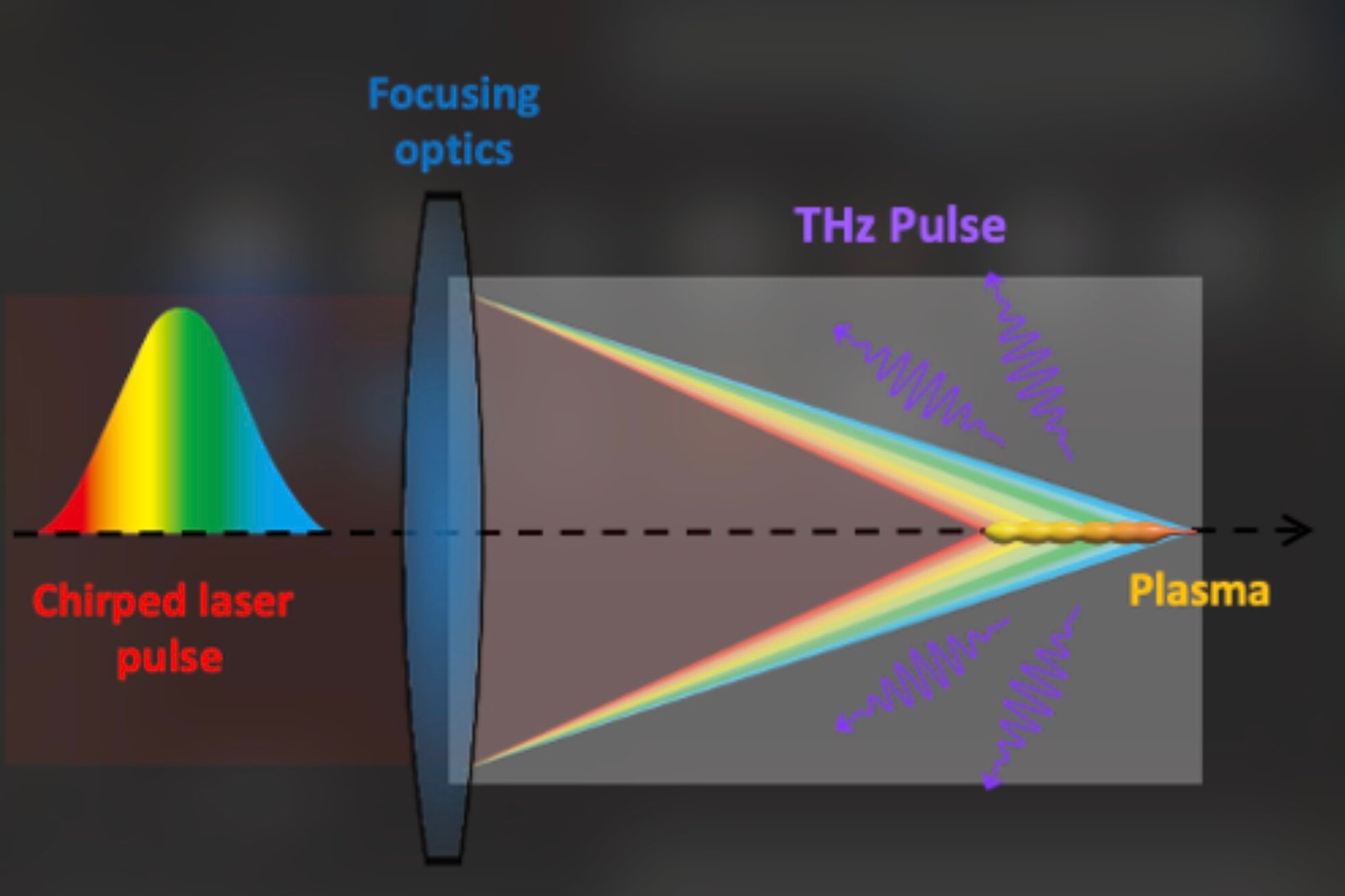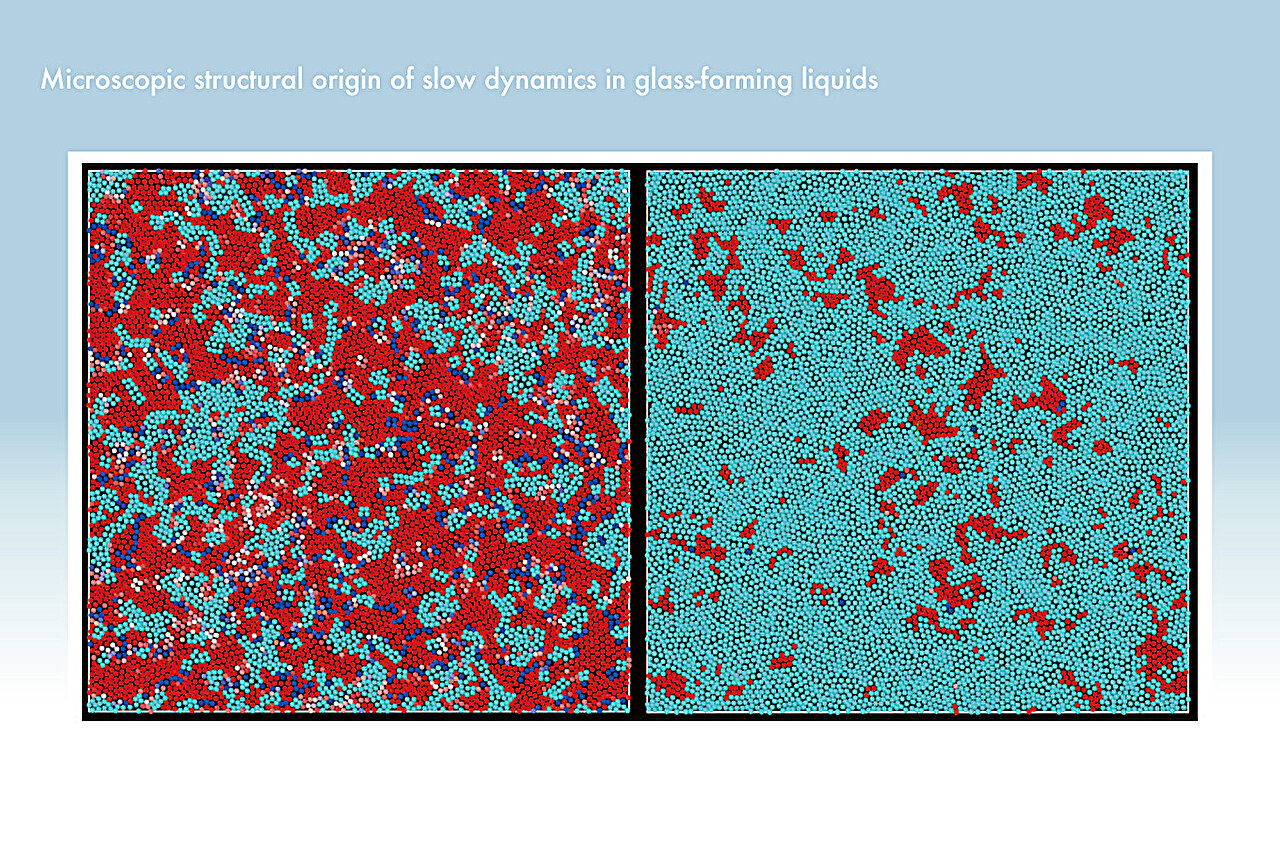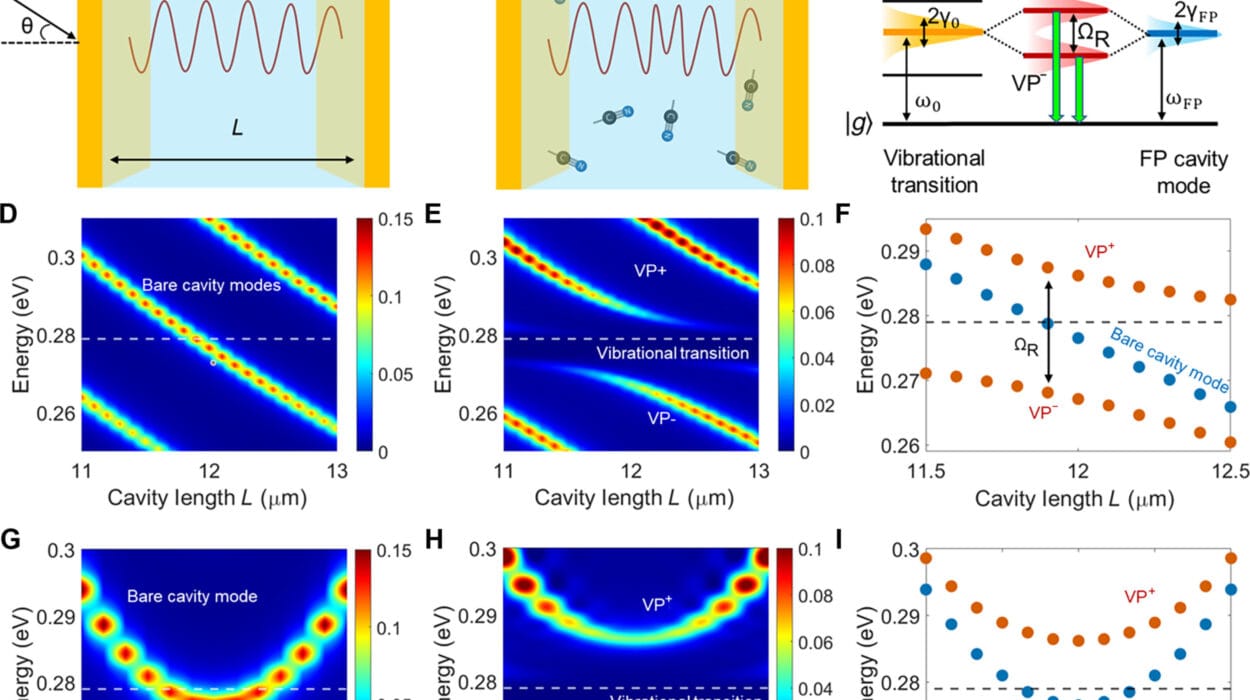Terahertz radiation (THz), a form of electromagnetic radiation with frequencies between 0.1 and 10 THz, plays an essential role in the development of various technologies. These technologies include imaging systems, sensors, and spectroscopy tools, all of which have critical applications in fields like medicine, security, and telecommunications. However, despite decades of research into manipulating THz radiation, controlling its direction in open air has remained a significant challenge.
In a groundbreaking study, researchers from Ecole Polytechnique at the Institut Polytechnique de Paris, in collaboration with CNRS, have made significant progress in controlling the direction of laser-produced THz radiation in air. By using a novel technique known as the “flying focus,” the team has opened new possibilities for manipulating THz electromagnetic waves, potentially transforming the way we use THz radiation in future technological applications. Their findings, recently published in Physical Review Letters, could be pivotal for advancing THz-based technologies and driving innovations in fields such as remote sensing and spectroscopy.
The Challenge of Controlling THz Radiation
For almost two decades, Aurélien Houard, a senior author of the study, and his research group have been exploring the generation of THz radiation through laser-induced filaments in air. One of the key advantages of this method is that filaments can be created at a considerable distance from the laser, extending well into the atmosphere. Despite this, a major limitation has been the confined emission of THz radiation close to the axis of the laser, which hinders its utility for remote detection or widespread applications.
“The radiation produced by these filaments remains tightly confined along the laser axis,” Houard said, emphasizing the challenge. “This confinement made it difficult to steer or detect the THz radiation from a distance, which is a limitation for real-world applications.” The research team’s goal was clear: they needed a reliable method to control the direction of THz radiation in the air, breaking free of the constraints imposed by the natural emission patterns.
The Flying Focus Technique
The breakthrough came when Houard and his colleagues introduced the flying focus technique to control the direction of THz radiation. The technique works by manipulating the group velocity of femtosecond laser pulses—extremely short bursts of light with pulse durations on the order of femtoseconds (10⁻¹⁵ seconds). The group velocity plays a pivotal role in determining the angular distribution of the THz radiation produced by laser-induced filaments. In essence, the velocity of the ionization front—the point where air molecules are ionized (stripped of their electrons)—can be adjusted to direct the emitted THz waves at specific angles.
“The key idea is to control the velocity at which the ionization front propagates,” Houard explained. “By shaping the frequency components of the laser pulse, we can effectively steer the direction of the plasma’s velocity, which, in turn, allows us to control the direction of the THz radiation it produces.“
In this technique, the laser pulse interacts with the air, creating a plasma filament, a small region where air is ionized. The unique properties of the flying focus technique allow the researchers to manipulate the velocity of this plasma, thereby controlling the emission angle of the generated THz radiation. By adjusting the plasma’s velocity, they could direct the THz waves in various directions, including backward emission—a crucial achievement for future applications.
Promising Results and Potential Applications
The initial experiments conducted by Houard and his team showed highly promising results. For the first time, the researchers successfully demonstrated the ability to steer laser-produced THz radiation in open air using the flying focus technique. In particular, they were able to manipulate the angle of the THz radiation to either increase its intensity or direct it in the opposite direction (backward emission), a significant step forward in controlling THz radiation in atmospheric conditions.
Houard highlighted the significance of the study: “Our findings demonstrate that it is now possible to steer THz radiation in the air in a precise and controlled manner.” This ability could prove transformative for a wide range of applications. One potential use is the development of remote THz spectroscopy tools—instruments that can analyze materials from a distance using terahertz radiation. Such technologies would have profound implications in fields such as materials science, non-destructive testing, security screening, and medical imaging.
“By reversing the direction of secondary radiation, we can produce backward THz emission, which could be useful for developing new diagnostic tools and enabling precise material analysis in various settings,” Houard added.
Future Directions and Optimizations
While the results are promising, the researchers are not stopping there. They plan to optimize the THz emission from the filament and explore how the flying focus technique could be applied to other forms of secondary radiation produced by laser filaments. The ability to manipulate a range of different electromagnetic waves—such as X-rays and gamma rays—could unlock a host of new possibilities for advanced imaging, sensing, and spectroscopy techniques.
Additionally, the team plans to explore further improvements to the flying focus technique, including enhanced ionization control and fine-tuning the laser pulse characteristics for even greater precision in directing THz waves. There is also interest in applying the technique to high-energy lasers to increase the efficiency of THz production in future experiments.
Broader Implications for Technology and Science
The ability to steer THz radiation with precision has wide-ranging implications. In communications, THz radiation could be used for ultra-fast data transmission, potentially providing speeds far beyond current wireless technology. In medicine, THz spectroscopy could be harnessed for non-invasive imaging, allowing for detailed insights into biological tissues or detecting early signs of disease without the need for biopsies.
The applications of this research extend to security, where THz waves could be used to detect hidden objects, such as weapons or contraband, without the need for physical contact. In materials science, THz radiation could help researchers study the internal structure of materials, identify flaws, and develop more efficient, lightweight materials for a variety of applications, including aerospace and electronics.
As researchers continue to explore the potential of the flying focus technique and refine its capabilities, the future of THz technology looks increasingly bright. This breakthrough in steering THz radiation could mark the beginning of a new era in the manipulation of electromagnetic waves, paving the way for an exciting array of innovations across science and technology.
Conclusion
The recent achievement by researchers at Ecole Polytechnique marks a significant milestone in the manipulation of terahertz radiation. By utilizing the flying focus technique, they have successfully demonstrated the ability to control the direction of laser-produced THz waves in air, overcoming a long-standing challenge in the field. This advancement holds immense potential for a range of applications, from remote sensing and spectroscopy to communications and medical imaging.
As further research unfolds, the flying focus technique could pave the way for the development of advanced technologies that harness the power of THz radiation to transform industries, improve safety, and unlock new scientific insights. The future of THz-based innovations is undoubtedly promising, and this breakthrough may serve as a cornerstone for exciting developments to come.
Reference: Silin Fu et al, Steering Laser-Produced THz Radiation in Air with Superluminal Ionization Fronts, Physical Review Letters (2025). DOI: 10.1103/PhysRevLett.134.045001. On arXiv: DOI: 10.48550/arxiv.2407.18579






